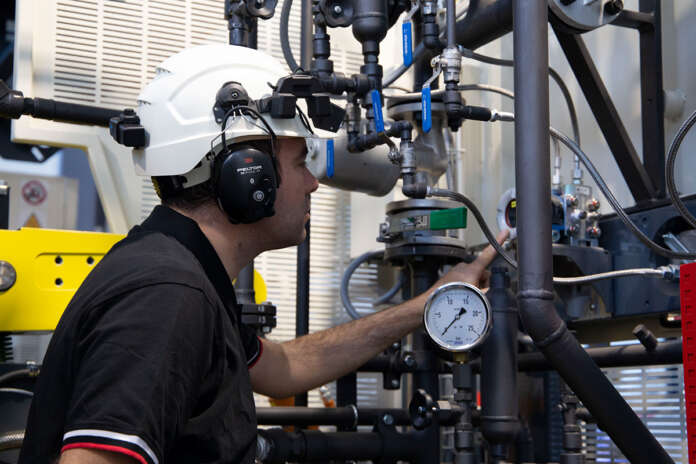
As the marine industry adjusts to the constraints placed on people’s movements imposed by national Governments to limit the spread of the COVID-19 virus, remote ship inspection has gathered pace. RINA began trialing remote inspections as part of the society’s broader digitalization initiative back in May 2019. This in[ds_preview]itiative included surveys, but also electronic certificates, fleet performance online monitoring tools, electronic logbooks, virtual reality training and general remote inspection techniques.
From May 2019 until the end of September 2020 more than 1500 remote surveys, showing an exponential trend increase, not only due to actual travel restrictions but also thanks to authorizations given from some Flag Administrations, first and foremost the Liberian Registry (LISCR), that acted as an accelerator in an industry that is traditionally conservative.
Together with LISCR, RINA performed the world’s first statutory and associated class intermediate surveys using remote technologies on the bulk carrier Cielo di Gaspesie, owned by the d’Amico Group. The inspection, which was broadcasted to the RINA and Vroon offices in Genoa, started on open decks, with an all-round check on cleanliness, life-raft maintenance, conditions of windlasses and chains, then moved to the Engine Room compartments, where tests were conducted on auxiliary generators and equipment performance was verified. Finally, Bridge equipment was tested satisfactorily with the help of the Captain. Following the completion of the survey, the ship was assigned the new class notation “REMOTE” by RINA. This new notation identifies the ships deemed by the Society to be eligible to be surveyed remotely for the largest scope of class surveys as well as periodical ones. Same notation was recently achieved by an OSV for the very first time VOS Hestia, owned by the Vroon Group.
The success of RINA’s remote surveys lies in the use of a dedicated technology, an advanced software application that allows RINA surveyors to operate in an environment that is equivalent in terms of quality to a survey with physical presence of the surveyor on board. This technology is not limited to remote surveys and can be also used for testing and certifying marine products.
Thanks to the strategic partnership with the deep-tech company VRMedia, RINA was able to bring the development of remote inspection techniques to a higher level with the introduction of a smart helmet, a wearable hardware and software fully integrated system. The KIBER Helmet is equipped with a large FOV wireless camera, noise-cancellation headset, a high-quality audio microphone and a HD binocular visor featured by a Video-See-Through Augmented Reality technology. This smart device provides a high-resolution image capture, real-time mark-up of images or videos and easy document sharing.
G. Vezzuto, EVP Marine at RINA, said: “The interest for remote surveys will continue to raise, even after the emergency will finally fade out. Remote inspections help to guarantee the continuity of ship operations with flexibility, high quality standards, cost saving and environmentally friendly solutions. However, having a solid and reliable scheme is fundamental for giving confidence to all shipping stakeholders in remote survey techniques. The approvals we got from primary Flag Administrations just demonstrate we are on the right path”.
















